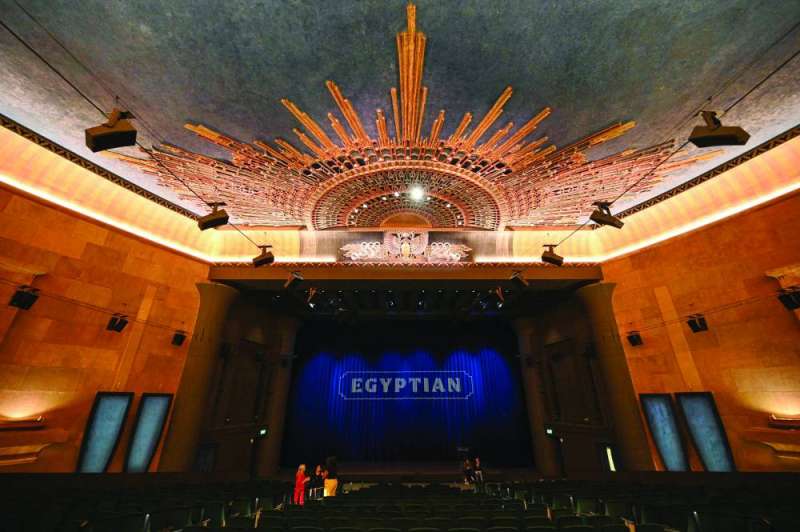08/11/2023
08/11/2023

KUWAIT CITY, Nov 8: Under the auspices of Netflix, the “Egyptian Theater” hall, with its majestic columns and courtyard decorated with fake hieroglyphs, is being revived. This famous American movie theater, neglected for many years, was the first to roll out the red carpet at a movie show more than a century ago.
The movie theater, which has regained its former splendor, will open its doors on Thursday in Los Angeles, after years of struggle to preserve its façade.
The Netflix platform, which is constantly accused of burying the seventh art, believes that saving this institution, which dates back to the golden age of Hollywood, is a way to confirm its fundamental position in the sector.
Speaking to Agence France-Presse, Netflix co-CEO Ted Sarandos said, “Hollywood lies in the symbols,” adding that “the Hollywood sign and this theater are the two most famous symbols in Hollywood.” He continued, "Unfortunately, the Egyptian theater was neglected."
Inspired by ancient Egypt, a theme that was popular in California during the 1920s, this movie theater opened its doors in 1922, with the world premiere of “Robin Hood,” directed by Douglas Fairbanks.
The organizers celebrated this occasion with employees dressed in Egyptian costumes, and they spread the house’s courtyard with a red carpet to welcome prominent guests such as Charlie Chaplin.
Since then, this move, taken from the traditions of European royalty, has spread throughout the world and has become a major aspect of major festivals and shows.
Despite its successful beginnings, Egyptian theater later faced several difficulties. A few years after its opening, its owner’s interest in it faded and he began to focus on building the “Chinese Theater” located a short distance away on Hollywood Boulevard, which became a major stop for tourists in Los Angeles, where they went to enjoy the footprints and hands of famous people frozen in cement.
The Theater was severely damaged by an earthquake that struck Los Angeles in 1994.


